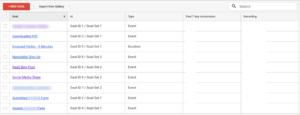Marketing in the digital age is all about that data. Marketers have access to a dizzying array of performance metrics, letting us analyze every click, view, and purchasable in a dozen different ways. However, this blessing of virtually unlimited data can also be a curse: with so many metrics to consider, it’s easy to miss some of the most important ones. Here are some of the most overlooked customer metrics that every marketing team should keep in mind.
Become the best CRMer you can:
CRM Hack: Monitoring the User’s Heartbeat
What Does It Mean to Treat a Customer’s Email With Respect?
To Lock or Not to Lock Customers (into CRM Journeys)
What the Efforts to Promote Responsible Gaming Look Like Form the Inside
Retention
So much of marketing focuses on user acquisition and growth that marketers often miss out on an equally important data point: retention. Are you actually retaining the customers you worked so hard to acquire? Probably not, according to Hubspot Global Partner Program Manager Iliyana Stareva.
As Stareva put it, “People still want to be educated and consume content to make purchase decisions, but the biggest drivers of growth today are your existing customers, who recommend your business to other prospects.” As we’ve reported before, there’s no commonly accepted formula to calculate the costs of keeping customers, whereas analyzing spend on user acquisition is a bit more straightforward. Regardless, “marketers need to start paying more attention to nurturing existing customers, making them even happier, and encouraging them to do more business,” Stareva said.
Intent Data
When it comes to modern advertising, marketers often only have a split second to make an impression on potential customers. Meanwhile, these users have grown to expect a personalized marketing experience and won’t think twice about ads that don’t appeal to their specific tastes and buying habits. That’s where intent data, or data that tracks online behavior and shopping habits, comes into play — but not enough marketers are using it.
According to MarTechAdvisor, timing is key to capturing intent data: “What we search for this week is not necessarily what we are searching for next week or the week after.” Perhaps that’s why some marketing teams are falling behind on this useful metric. By having campaigns ready to launch when intent data is available, you can provide users with a better customer experience, which often correlates with higher acquisition rates.

Sentiment
Some metrics are relatively easy to measure. You can get a good sense of ROAS, UA costs, and other KPIs just by analyzing your data and doing the math. But how do you measure a feeling? There’s no easy answer, but what’s not up for debate is the importance of sentiment in marketing campaigns. Just ask major retailers like Burberry and Apple, who recently had to re-evaluate their plans due to shifting sentiment during COVID-19 quarantine.
Sentiment analysis is important not just because it helps predict consumer behavior, but also because it can help marketers make sense of misleading metrics. For example, a marketing campaign might be getting a lot of attention — typically a positive — because people hate it so much they can’t stop sharing it. Forbes calls sentiment analysis a “best-kept marketing secret,” because it goes beyond standard metrics to measure the quality of interactions and engagement.
Marketing pros don’t have an easy job when it comes to figuring out what metrics are most important. Between the ever-changing digital marketing landscape and shifting consumer expectations, it’s not unusual for some KPIs to get left behind. If you’ve been neglecting any of the metrics we’ve listed here, it’s time to give them another look. They might just give you the push you need to take your campaigns to the next level.
The post What Customer Metrics Are You Overlooking? appeared first on Post Funnel.




